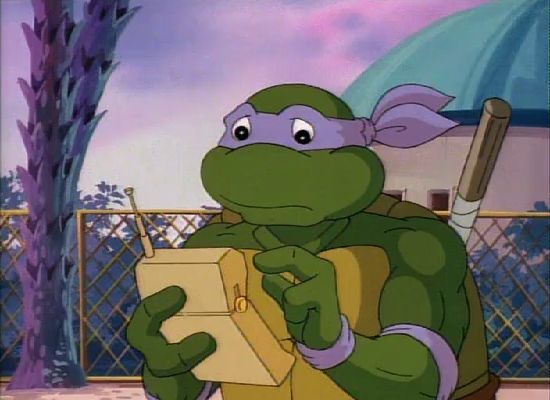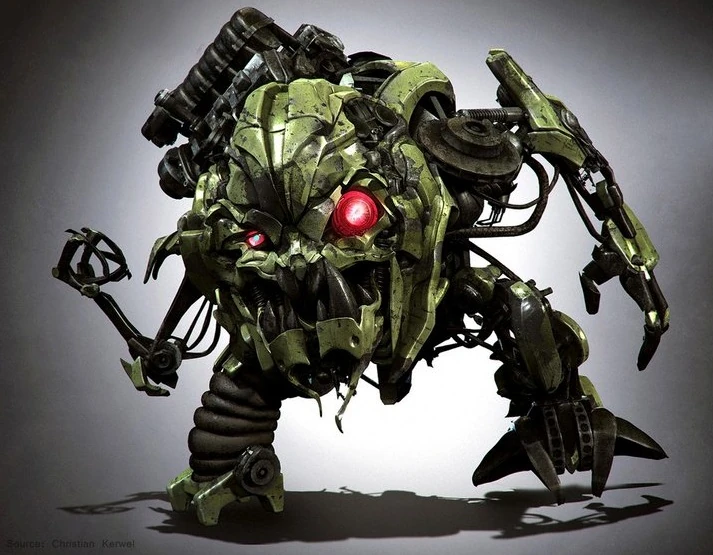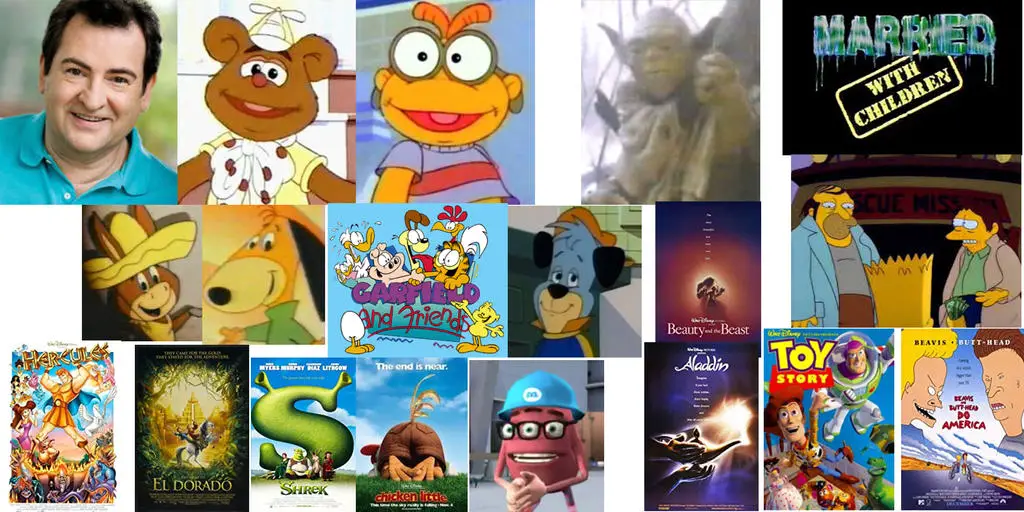Table of Contents
- Introduction
- Spotlight on Greg Berg
-
Interview
- 1. On voicing Donatello and Bebop
- 2. On challenges with “Muppet Babies”
- 3. On evolving voice acting industry
- 4. On lessons from industry legends
- 5. On voicing Igor in “Transformers”
- 6. On challenges in video game voice acting
- 7. On comedic styles in “Simpsons” and “American Dad!”
- 8. On a special character or project
- 9. On camaraderie in voice acting
- 10. On future of voice acting
- 11. Advice for aspiring voice actors
- 12. On future aspirations
Introduction

In January 2025, Tales From the Collection had the privilege to conduct an exclusive Q&A with Greg Berg via mail correspondence. Berg, an accomplished voice actor, shared his experiences portraying beloved characters, his perspectives on the evolving voice acting industry, and his enduring passion for the craft.
Spotlight on Greg Berg
Greg Berg is a versatile voice actor best known for his work on iconic animated shows. With his memorable portrayals of Baby Fozzie and Baby Scooter in “Muppet Babies”, Berg brought to life characters cherished by audiences of all ages. He also contributed to the original “Teenage Mutant Ninja Turtles” animated series, voicing both Donatello and Bebop in select episodes. Over his extensive career, Berg has made his mark not only in animation but also in video games and commercials. When he’s not behind the microphone, he enjoys exploring his creative talents and mentoring aspiring voice actors, leaving a lasting impact on the industry.
Interview with Greg Berg
You voiced both Donatello and Bebop in the original “Teenage Mutant Ninja Turtles” animated series. How did you differentiate these two distinct characters in your performances?
Thanks for asking – Donatello was an intelligent, sensitive turtle – I went for an alternative voice for the brilliant original voice actor Barry Gordon 1 . After giving the fill-in role, I was told he also did Bebop, a loser villain, with a gruffer voice. As, luckily, I was a non-multi-voice talent, I had to imagine what he did for the character and I was easily matching it, so I retained doing both roles. In animation, you may be needed for multiple roles – precisely 3 – so they don’t need to hire 3 separate people. I focused on character work and I got what was needed.

“Muppet Babies” featured your portrayals of Baby Fozzie and Baby Scooter. What unique challenges did you encounter in bringing these beloved characters to life?
I had always dreamt of working on shows that entertained adults and kids with a positive message. All the timing came together where various characters were needed, and I did my best to follow the characters I did. I was young, so the voices weren’t forced.
I auditioned like many for the show and again from character study, acting, and a good ear, I had earned both voices. Playing with such an impressive project, I had to do well enough to play on the major show. And with the cream of the crop team that catered to the whole world, I did my best to conquer the portions needed.
Your career spans various roles in animation, video games, and film. How has the voice acting industry evolved since you began, and what changes have you observed in the profession?
After doing this work for over 40 years professionally, I studied with the best of the best to see if my talents would prevail on more than 1 show or area of voicing.
I started professionally at age 25, sure they bring in the creative arts there were no limits at day 1. I began doing voices playing in Hollywood, besides some of the older talent from the radio play days. The talent was superb, so if I wanted to at least further, I tested my abilities. This was a young guy in town. I used to listen to old radio plays as a teen, and then I was in one! I loved comedy character works, so I researched them—where to study and learn the ins and outs of the business. You find that it gets you in the door, but you have to be well into the work to stay.
Working with industry legends like Daws Butler 2 and Harvey Lembeck 3 must have been influential. Could you share insights or lessons learned from these experiences?
I grew up on a lot of Daws’ work. My attitude all along is find the best in the business and hopefully learn from them.
Daws trained me well doing voice characterization and delivery. Eventually, you see, I was able to bring a young Huckleberry Hound to life by being cast in a gig after he passed and other new versions needed someone to bring him back as a young form!
Harvey, at the time, taught talents who went on to comedy shows and film: Robin Williams, John Ritter, and Happy Days cast members. No one else came to mind who had such an influence. Harvey always taught us to aim for the laugh’s worth in needed, long funny material (being clean). Also, being clever! Daws taught respect for material and how he played with subtlety and clever character creations.
In “Transformers: Dark of the Moon”, you voiced Igor. How did you approach developing the voice for this character, and what was the creative process like?
It happened in December when I was given the audition. The character didn’t have much dialogue but was about how he growled and was subservient to the Decepticon. So, I had to figure how wild they wanted it. After a few months went by, I was told I got this Igor voice – every audition I went by and was told to record in April – what did I do again? Well, correct animations are kept, and sure enough, Michael Bay 4 had my sample and he played it back to dub for the movie. I was happy he picked me, and frankly, it’s now this mutant angry … with my voice choice! So far, he hasn’t pulled him off, so who knows if he’ll be back?

You’ve contributed to video games such as “inFamous” and “Hitman: Absolution”. How does voice acting for video games differ from animated series or films, and what unique challenges does it present?
A lot more work and effort goes into creating for video games.
I’ve performed video game characters from cartoons and police affairs and pedestrians in cases, lots of actions are going on, so there may be more yelling. After hearing some sessions taking as much as 4 hours each – spinning my brain to perform a line 5 to 10 times to get different types of emphasis or I heard back from engineers who record many sessions.
They run lots of takes to satisfy directors, and then the recording engineers have to spend hours finding the recordings to keep for the game. However, I have worked reading and voicing for 40+ years, and I’ve been congratulated by a number of engineers because after doing the many times compared to a beginning talent, I’ve did a pro job where many sessions told me they only took a minute or two to piece my work, making them grateful.
Your work includes voicing characters in “The Simpsons” and “American Dad!”. How do you adapt your vocal performances to fit the distinct comedic styles of these shows?
I learned from experience with all the different cartoons ever made. In cases you get familiar with the shows and your characters are established shows, you should not do squeaky voices. Like early cartoons let any regular voice acting without silly voice – like Simpsons, they are normal characters saying funny things without doing silly voices. It’s part of the voice acting business.
Reflecting on your diverse roles, is there a particular character or project that holds special significance for you, and why?
I’ve maintained a 40-year career by listening to what one can earn in voicing so different – I’ve done sound-alike voice 6 celebrity matching on animation, Robert DeNiro, and Kiefer Sutherland among many. It’s due to a good ear and versatile voices.
There are other talented voiceovers who have an ability to do animal sounds and others who are great singers who replaced some celebrities who couldn’t sing so well. I love any work the casting directors find inclusive for types of projects needed. It shows how young I can sound, how dark I can get, and again creating voice practice by even being honest and trying for the art. It doesn’t waste their time – it makes them come to me, giving me samples of what’s needed.
The voice-acting community is known for its camaraderie. Can you share memorable experiences or collaborations with fellow voice actors that have impacted your career?
I am thrilled working with projects that may have young or old professionals, which have been almost all projects. You must be brilliant when on shows with established characters, or else you only stick out as a possible threat or not worthy to be part of a show trying to get a following.
So, along my career, it was out at first trying to prove my talents could fit in. They have, as I am constantly learning from every turn I’ve worked with. Just like starting with Daws – his characters in person caught my ear, as it got on shows that helped when needed characterizations of classes he created. I learned on-the-job as well as in workshops – tricks of the trade – like how to create a good doppel sound effect that some shows may need.
With the rise of digital media and streaming platforms, how do you see the future of voice acting evolving, and what opportunities or challenges do you anticipate?
The business of voicing can always be challenging, and that’s the fun of the work – each day I play with challenges, never knowing if one day I need to do a talking chair or a growling candy monster. After 100, I stopped keeping track of voices.
Back in early cartoons, people played characters with big speedups, and they became Chip and Dale or Alvin and the Chipmunks. Now, they are trying to create AI voices 5 copying established stars, but that is technical work – records or takes recordings of celebrities and adding them to films or narrated presentations. How nice it would be – just manipulating stars’ voices. Where it’s going? Who knows, but hope I can still play.

For aspiring voice actors, what advice would you offer regarding developing versatility and sustaining a long-term career in the industry?
For aspiring voice actors, I address whether the gathered audience will be interesting when you find talent to spark on for at least 5 categories. As I hear talents to voice under an umbrella – you can have a career or a lot more work in voicing under an expandable voice.
Impressions or great fun are stepping into natural voices. I discovered being able to do multiple voices but I also add commercials without always silly voices. But as I found, I can work doing multiples. I have opened it to more work availability.
Some voice people could well enjoy narrating (which I haven’t explored) or often do voiceable where others are needed. If anyone is interested, consider to contact me as I do give talks and take fun variety traits on the VO humor or can describe who I do.
Looking ahead, are there any specific genres or types of characters you aspire to explore in your future work?
I am thrilled with any work performing in my general. I know what I have to offer at this point. In some cases, producers of projects needing voices feel inside of what I can provide. I say to any creative producer, writer, voice people in need of a multi-light voice – that is my forte.
Fun sound-alikes or characterizations. I did some animal characters, commercials, film-added voices (known as ADR), cute and cuddly characters. I have not endeavored, but on-the-try-out are nature difficult to produce. I’m often robot voices – it avoids wasting or filler material.
Much of my main interests reach doing animated works, or if voices are needed in audio players to cover work where an actor has passed away, and they are trying to replicate a talent. That’s why I direct people to contact me: ieVoices.com.
- Barry Gordon: The original voice of Donatello in *Teenage Mutant Ninja Turtles* who brought intelligence and sensitivity to the character.
- Daws Butler: A legendary voice actor known for roles such as Yogi Bear and Huckleberry Hound, who mentored many in the industry, including Greg Berg.
- Harvey Lembeck: A renowned comedy coach whose students included Robin Williams and John Ritter.
- Michael Bay: The director of the *Transformers* films, including *Dark of the Moon*, where Rolston voiced Igor.
- AI in Voice Acting: A growing trend where artificial intelligence is used to replicate celebrity voices, raising ethical and creative concerns in the industry.
- Sound-Alike Work: A practice where voice actors mimic the voices of celebrities or characters, often used in animation and ADR (Automated Dialogue Replacement).

